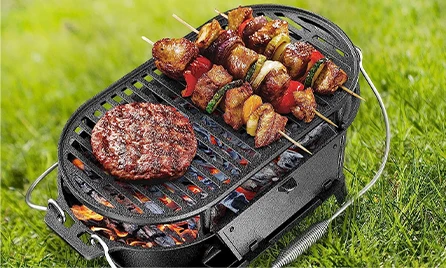
Tips for Selecting the Perfect Dutch Oven for Your Cooking Needs
Choosing a Dutch Oven A Comprehensive Guide
A Dutch oven is a versatile kitchen essential that has been cherished for centuries. Its ability to withstand high temperatures and retain heat makes it perfect for a variety of cooking methods, from baking and braising to frying and boiling. If you’re looking to invest in a Dutch oven, choosing the right one is crucial for both your cooking needs and your kitchen aesthetics. Here’s a guide to help you make the best choice.
Material Matters
Dutch ovens are typically made from two primary materials cast iron and enameled cast iron.
- Cast Iron Traditional cast iron Dutch ovens are known for their excellent heat retention and even heat distribution. They are ideal for slow-cooking, stewing, and baking. However, they require regular seasoning to maintain their non-stick properties and prevent rust.
- Enameled Cast Iron Enameled versions come with a porcelain enamel coating that eliminates the need for seasoning. This makes them easier to clean and less reactive with acidic foods. Enameled Dutch ovens are available in a variety of colors, adding visual appeal to your kitchen. They’re also perfect for braising, simmering, and baking bread due to their heat retention.
Size and Capacity
Dutch ovens come in various sizes, typically ranging from 2 quarts to 7 quarts. Your choice should depend on your cooking habits and the number of people you usually cook for
- A 2-3 quart Dutch oven is perfect for side dishes or meals for one or two people. - A 4-5 quart Dutch oven is a versatile size suitable for family meals, soups, and stews. - A 6-7 quart Dutch oven is ideal for larger gatherings or batch cooking.
Keep in mind that larger sizes can also be heavier, which may impact handling and storage.
Shape and Design
choosing a dutch oven

Dutch ovens are generally round or oval
. The shape can affect your cooking experience- Round Dutch Ovens are more common and work well for most recipes, including baking bread and making soups. - Oval Dutch Ovens are great for larger cuts of meat, like roasts or whole chickens, as they provide extra space.
In terms of design, many enameled Dutch ovens feature stunning colors and textures that can serve as serving dishes, allowing you to go from oven to table seamlessly.
Heat Source Compatibility
Consider the type of heat source you’ll be using. While most Dutch ovens are compatible with gas and electric stovetops, not all are suitable for induction cooktops. If you have an induction stove, ensure the Dutch oven is labeled as induction-ready. Also, check if the Dutch oven is oven-safe; most are, but it’s always best to confirm.
Brand and Price Considerations
Some well-known brands, like Le Creuset, Staub, and Lodge, create quality Dutch ovens with varying price points. While high-end brands offer durability and aesthetic appeal, there are also budget-friendly options that perform well. Evaluate your budget and how frequently you plan to use the Dutch oven to determine the best investment.
Care and Maintenance
Taking care of your Dutch oven properly will extend its lifespan. For cast iron, avoid using soap when washing; instead, scrub it with hot water and a stiff brush. Enameled versions can typically be washed with soap and are dishwasher safe.
Conclusion
Choosing the right Dutch oven can elevate your cooking experience and provide you with a reliable tool for a myriad of recipes. By considering material, size, shape, and brand, you can find the perfect Dutch oven that meets your culinary needs and fits into your cooking lifestyle. Whether you’re a novice cook or a seasoned chef, a Dutch oven is a worthwhile addition to your kitchen arsenal. Happy cooking!
-
Season Cast Iron Perfectly with GPT-4 Turbo TipsNewsAug.01,2025
-
High Quality Cast Iron Cookware - Baixiang County Zhongda MachineryNewsAug.01,2025
-
Premium Cast Iron Pan: Durable & Perfect HeatNewsAug.01,2025
-
High Quality Kitchen Durable Black Round Cast Iron Cookware Pancake Crepe Pan-Baixiang County Zhongda Machinery Manufacturing Co., Ltd.NewsAug.01,2025
-
Cast Iron Cookware - Baixiang County Zhongda Machinery | Nonstick, Heat ResistanceNewsAug.01,2025
-
High Quality Kitchen Durable Black Round Cast Iron Cookware - Baixiang County Zhongda Machinery | Non-Stick, Heat Retention, DurableNewsJul.31,2025


